11 Digital Art and Design Exhibitions to Get Lost In From Home
Made up of more than just the works on view, the art and design worlds also comprise openings, lectures, fairs, biennials, and galas—all of which have gone on hiatus amid efforts to contain the spread of the novel coronavirus. And while socializing may remain on pause for now, galleries and institutions are coming up with innovative ways to continue their programming online, with ambitious virtual exhibitions, video tours, social media content, and engaging games. While the traditional white-cube exhibition display remains the most refined and delicately mute backdrop to honor an artist's work in person, the global health crisis has mandated an inevitable alternative, with gallerists and curators discovering the possibilities of limitless space and access that enclosed interiors inherently lack.
The concept of online viewing first started to blossom in the late 2010s as powerhouses like David Zwirner and Pace Gallery began to offer access to their pricey Koons and Hockney works in their online viewing rooms, which used a log-in system. Now more galleries and museums than ever are turning to digital exhibitions to maintain their public-facing programming.
The challenge in all endeavors remains navigating the absence of four walls and a roof—an encompassing environment for viewers to engage with the art, finished with dramatic lighting and curatorial orchestration. Last month the online-only Art Basel Hong Kong attracted over 250,000 digital visitors throughout its run on the fair's website, and was the art world's first large-scale effort to remain financially and socially active during the pandemic. Both the commercial and nonprofit sectors are quickly responding to the need to stay connected with online programming that pushes the technological and creative limits of virtual presence. Ahead, we've highlighted 11 digital initiatives from galleries and museums across the globe.
Louise Lawler’s Tracings for You, MoMA
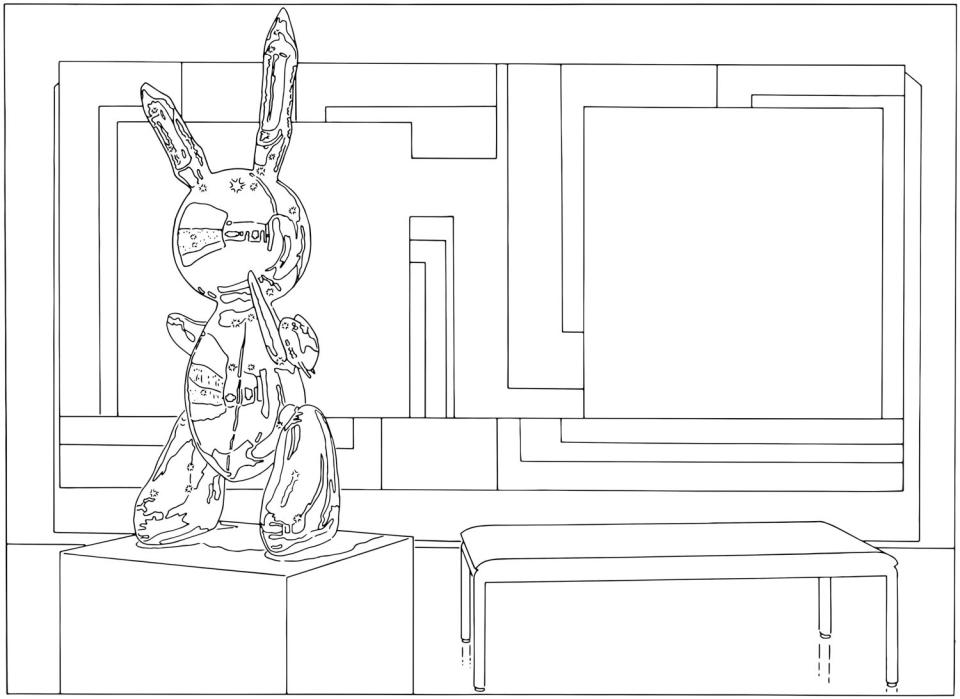
As far as public engagement goes, the Museum of Modern Art’s Louise Lawler’s Tracings for You project checks numerous boxes, connecting with audiences of all ages to stimulate their creativity while doing justice to the artist (whose work MoMA’s senior photography curator, Roxana Marcoci, says brings to mind the word indeterminacy). Lawler’s 12 line drawings are available to download on the museum’s website and color in, whether you choose to paint your own Jeff Koons’s Bunny in its signature chromatic tone, or take creative liberties for an alternative. The works are from the museum's 2017 exhibition Why Pictures Now, in which Marcoci had shown "emptied" black-and-white versions of Lawler's photographs of canonized artworks situated in collectors' homes, museums, and auction houses. MoMA's current digital offering gives another life to the series, which, at its core, “underpins the idea that pictures can have more than one life,” says Marcoci, adding, “Lawler’s tracing project makes us realize that what also matters to humanity and its modes of survival are imaginative ways to creatively share and connect.”
Material Matters, Pace Gallery
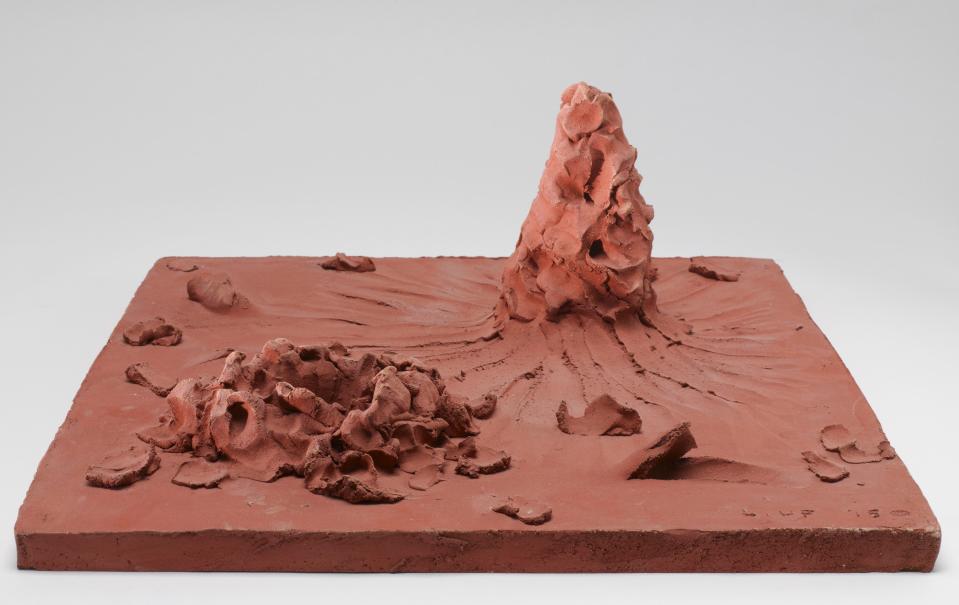
Untitled, 2016
Pace Gallery has challenged itself to present sculpture in a virtual realm with a group exhibition, Material Matters, organized by the gallery's curatorial director, Andria Hickey. While "meandering" through three-dimensional works by Lynda Benglis, Arlene Shechet, Lee Ufan, and Yin Xiuzhen, viewers connect with the tactility of ceramic or clay through their screens, appointing more responsibility to imagination and memory. The mesmerizing glare over Benglis’s corrugated ceramic sculptures, which simultaneously recall discarded tire debris strewn across highways and the excavated remnants of an otherworldly beast, yearn for closer inspection; however, the “complexity of bringing sculpture into viewers’ homes,” explains Hickey, “allows for a different kind of storytelling that feels more in line with publication or film.” To that end, she has implemented broader conversations between artist and viewer by making available supplementary quotes, audio interviews, and short films; the addition of virtual reality, 3D renderings, and gaming software is on the gallery's horizon.
Under Glass, Half Gallery

In contrast, the East Village’s Half Gallery is mirroring the experience of a virtual exhibition in real life, opening its windows to a group exhibition, Under Glass, while keeping its doors closed. “Given our new reality, we thought it made sense to present a show fully viewable from the street,” says gallery founder Bill Powers of the painting show, which benefits from the gallery’s “all-window” architecture. When it opens online and to passersby on April 18, the dioramic exhibition will feature paintings by Daniel Heidkamp, Peter Schuyff, and Chloe Wise, viewable from the street. “We won’t turn on gallery lights, so the show hours depend on daylight,” the founder says. The website exhibition will be accompanied by an audio guide recorded by Powers himself and gallery director Erin Goldberger. Powers’s curatorial decision to separate figurative and abstract paintings in a physical space may be bypassed online, but “an audio element mimics the conceit of a guided museum tour,” he notes. For artists, showing through limited views behind glass—either that of a street window or a computer screen—sounds equally alarming and inspiring. Wise mentally wrestles with what exhibiting painting means today, but she also admits “feeling drawn to compositions that contain an inferred lack, void, or something cut off from view,” not unlike a street view of a painting.
Power Wall, Lehmann Maupin
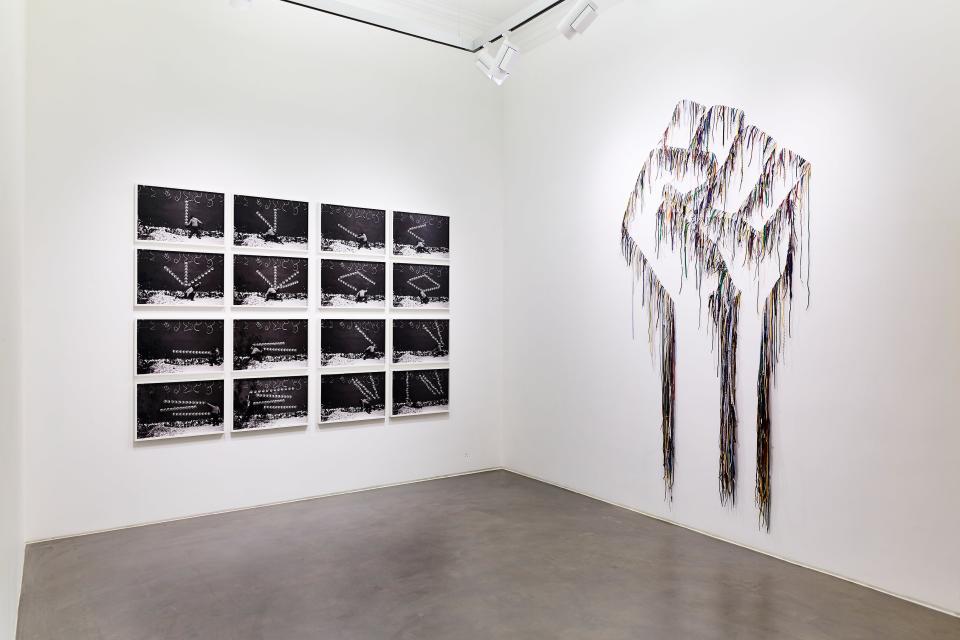
Chelsea gallery Lehmann Maupin thematizes the absence of walls with a show dedicated to Nari Ward and Robin Rhodes, two artists known for their textural and metaphorical investigations of concrete surfaces. After the gallery unveiled Power Wall at its Hong Kong space on April 3, it inaugurated its online viewing room with the digital adaptation, exhibiting the artists’ approaches to walls as “contentious spaces and sites of control division, and support,” according to gallery cofounder David Maupin. Harlem-based Ward is known for his grasping installations, for which he directly applies numerous shoelaces onto walls to orchestrate impactful texts or images on perseverance; for Berlin-based South African artist Rhodes, walls resonate with opposing aspects of urbanism and provide canvases for his abstract drawings and performative photo series.
Hope & Togetherness, Carpenters Workshop Gallery
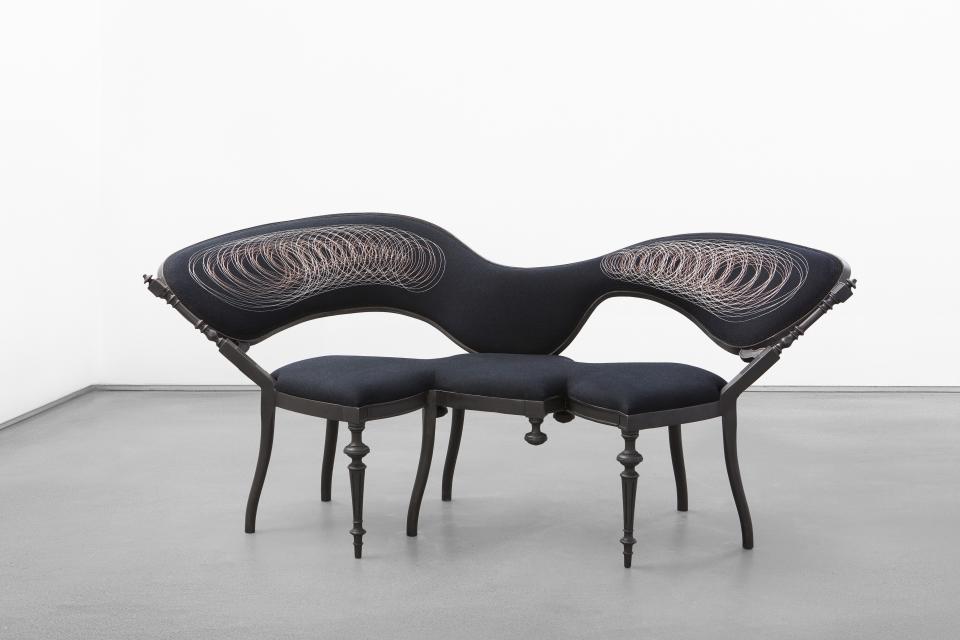
Another thematic group show taps into the prevalent urge for hope through the utilitarian nature of design. Carpenters Workshop Gallery’s Hope & Togetherness stems from German painter Gerhard Richter’s 1982 quote on art being “the highest form of hope,” and brings together artists, designers, and studios whose practices inherently borrow cues from a hopeful sentiment, such as DRIFT, Atelier van Lieshout, and Franz West. The curatorial response was an “organic one,” notes Maria Bonta de la Pezuela, the gallery’s CEO of the Americas, pointing out the thread of commitment to hope that runs through works exhibited on the U.S.- and Europe-based gallery’s first virtual show. DRIFT’s Flylight summarizes hopefulness with its poetic arrangement of a flock of glass birds, suspended in air, illuminated by its natural reaction to its surroundings, rather than a preprogrammed system. Color and form grant a similar sentiment to late Austrian sculptor West’s Kotznick, a pastel-hued papier-mâché heart with a mouth on its center, perched on a thin steel leg, reminiscent of a side lamp or single-legged pink flamingo.
Alserkal Avenue
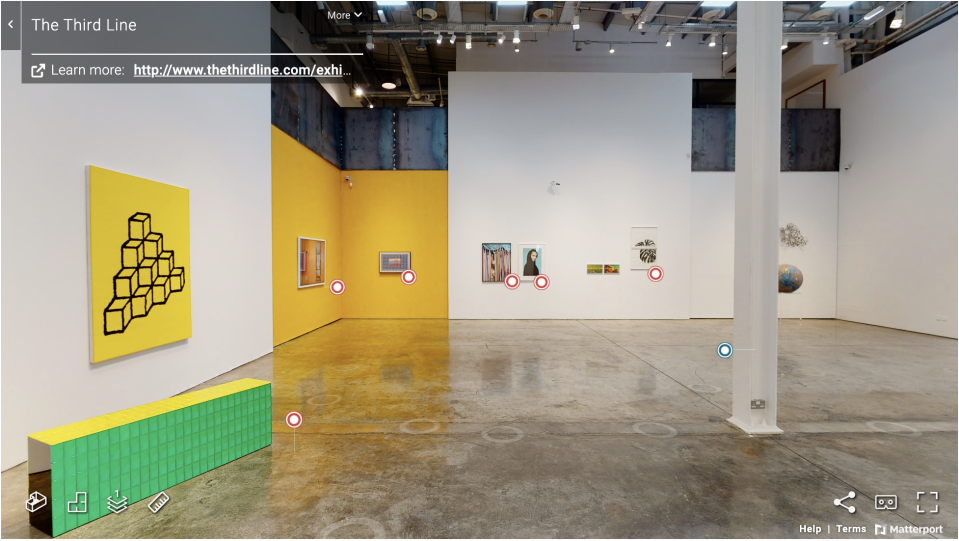
Outside the United States, art institutions are putting in similar efforts to remain connected with their local audiences and expand their viewership to a global range through an engaging web presence, and Alserkal Avenue is no different. Established in 2008, Dubai’s cultural district is currently devoid of passersby on its sun-drenched streets dotted with galleries, design offices, and creative studios. However, the organization beams visitors onto Emirati streets through 360-degree viewings of its exhibitions via a newly built online platform where its galleries and nonprofits, such as the Third Line, Ishara Art Foundation, Leila Heller Gallery, and Carbon 12, welcome guests into virtual replicas of their physical spaces. Known for his hilariously uplifting paintings of stick figures, California-based German painter André Butzer occupies Carbon 12’s digital walls, where the virtual viewing experience mimics the whimsicality of video games: a sentiment that perfectly fits into the artist’s unabashedly colorful renditions of human impressions and geometric abstractions.
Maria Helena Vieira da Silva, Di Donna
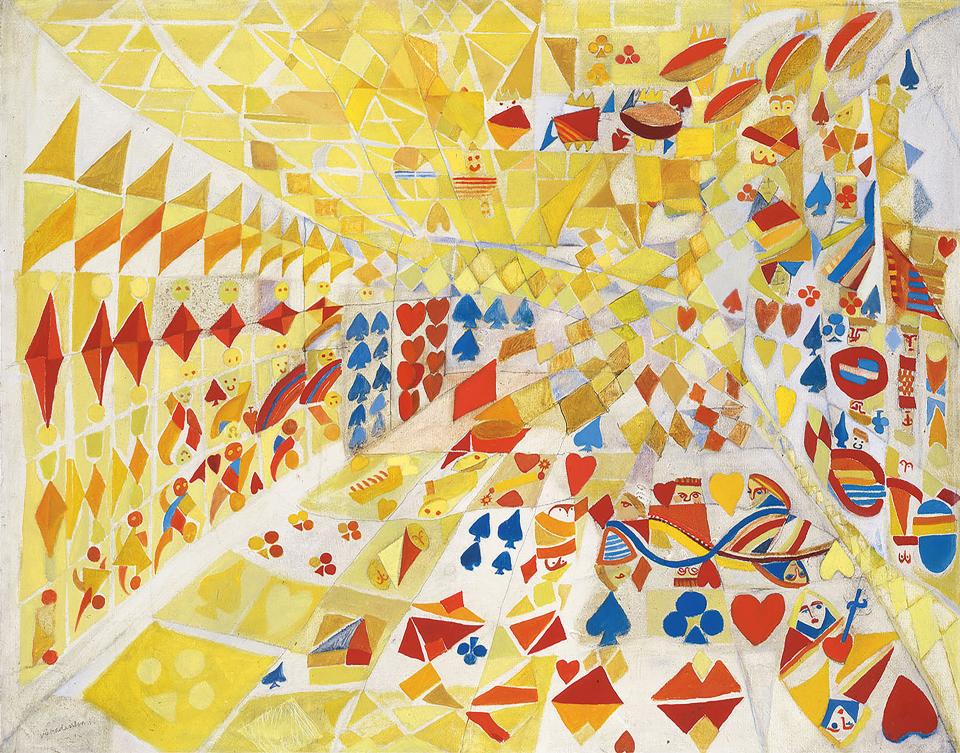
Mediums that inherently flirt with technology like photography and video are naturally better accommodated online, while the dramatic effects of brushstrokes over canvas are a challenge to convey for the screen. Upper East Side gallery Di Donna assumes this delicate task to present colorful abstract paintings by Portuguese Modernist Maria Helena Vieira da Silva. The digital show comes from Paris and London, where the public enjoyed Vieira da Silva’s hallucinatory densely-colored abstractions in person, and spans the artist’s five-decade-long career, which mainly flourished in avant-garde circles of postwar Paris. “The subtlety of colors, the texture and scale,” notes director Christina Floyd Di Donna, “are challenging to capture virtually”; however, she appreciates the broadened international audience that now has access to more than 30 paintings the overlooked artist created with visual dynamism and a broad range of references, including Ballet Russe and icons of card games. Hanging the show before the art world shut down allowed the gallery to film the installation, which provides deeper understanding of the painter's use of scale.
Platform, David Zwirner
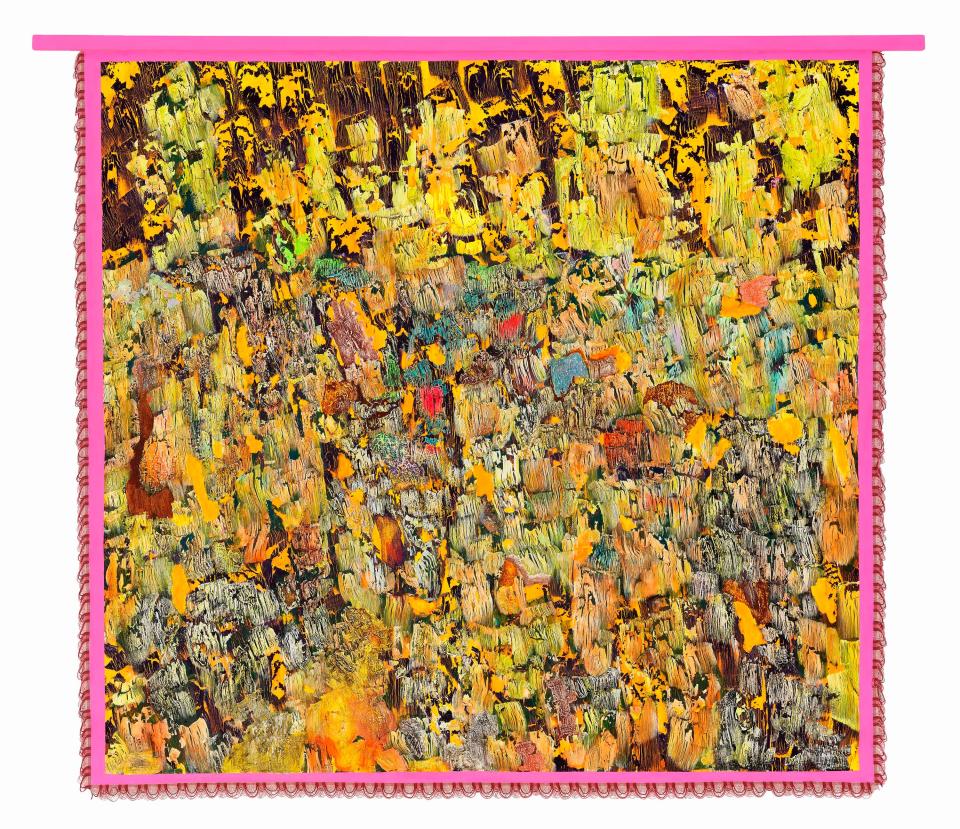
Closures for the unforeseeable future are taking a serious toll on smaller galleries, and, unlike the established powerhouses, they face issues around exposure, technical support, and limited clientele that are creating tougher financial burdens. As the first gallery to launch an online exhibition platform in 2017, David Zwirner’s virtual exhibition, Platform, connects Chelsea extravagance with the experimentalism of downtown Manhattan and Brooklyn, hosting works by a single artist from 12 smaller galleries. The solidarity project emphasizes young talents whose exhibitions closed earlier than planned or faced cancellations before works met the public. In addition to Lower East Side darlings such as 47 Canal, Bridget Donahue, David Lewis, and JTT, Ramiken and Elijah Wheat Showroom from Brooklyn join the dozen, offering a fresh breadth of artists who shed light onto the future of art market. Scroll down to Elijah Wheat Showroom for Hungarian artist Zsófia Keresztes, whose joyfully colored amorphous sculptures merge the craft aesthetic of glass mosaic with contemporary investigation of corporeality and self. Queer Thoughts gives platform to Megan Marrin’s charming paintings of vague domestic structures that equally resemble shower units and torture chambers.
Claude Closky, Dia Art Foundation
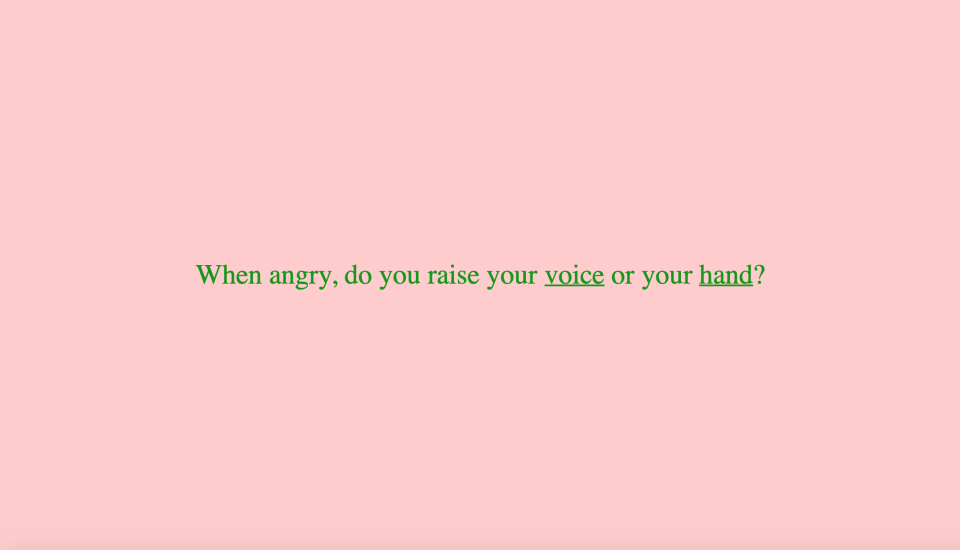
The minimalist tradition Dia Art Foundation has championed since 1970s is most iconically visualized with Richard Serra’s mammoth steel mazes or the poetic heftiness of Nancy Holt’s Sun Tunnels; less known is that the pioneering institution has the longest-running online art program among art institutions in the U.S. In fact, the enigmatic and contemplative visual lexicon minimalists mastered over natural materials functions merely different than that of data-based artists. “Having this archive of digital projects from the last 25 years is valuable now in a way we couldn’t have foreseen,” expresses director Jessica Morgan, singling out French artist Claude Closky’s 1997 project Do you want love or lust for its timely engagement with the public. Using questions culled from magazines and self-help manuals, the participatory piece pulls users into what she calls “a rabbit hole” of humorously absurd revelations about contemporary dynamics through the simplicity of language, another tool minimalist artists heavily employed for transcendence. Another addition to the institution’s digital endeavors is a blog which publishes artist prompts, similar to those of 1960s Fluxus artists Yoko Ono or Alison Knowles, guiding participants to perform certain mind and body exercises.
Hell Is a Place on Earth. Heaven Is a Place in Your Head, P.P.O.W
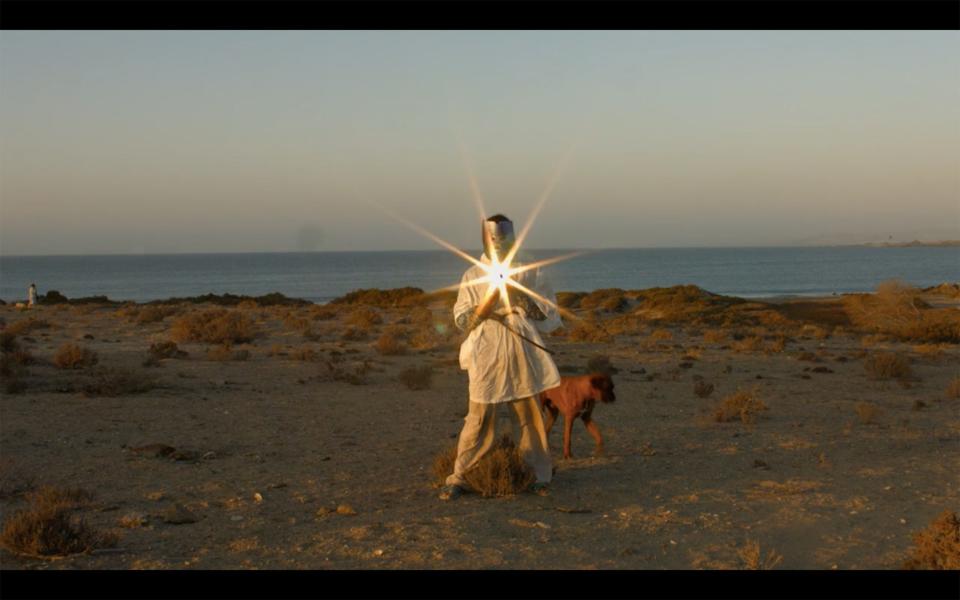
Contemplation is a central theme on offer in P.P.O.W’s group exhibition Hell Is a Place on Earth. Heaven Is a Place in Your Head, which brings together moving image by six artists, including Carlos Motta, Carolee Schneemann, Guadalupe Maravilla, and David Wojnarowicz. Adapting its title from a line in Wojnarowicz’s essay collection Close to the Knives: A Memoir of Disintegration, the scroll-down-style exhibition pauses at each artist to offer contemplation on trauma, from timely crises like AIDS/HIV to enduring ones like colonization and sexism. “Triggered,” says gallery coowner Wendy Olsoff, about their reaction to the current pandemic “after going through major financial crashes and calamities over the last 38 years,” including the AIDS pandemic, a subject many artists in the East Village–born gallery’s roster have long tackled. From Legacy, Motta’s half-hour video of a durational performance with a dental gag, to Fuses, Schneemann’s equally long documentation of her sexual encounter with her then partner, the exhibition asks viewers to slow down and lend their time to inhale the works’ thought-provoking subjects. Olsoff is inspired by bypassing given challenges of hanging an all-video show with the gallery’s first online show: “While I do long to get back to the white cube and looking at art on a wall, the potential now for interesting exhibitions and pairings is really unlimited.”
Atelier-E.B.: Passer-by, Garage Museum of Contemporary Art
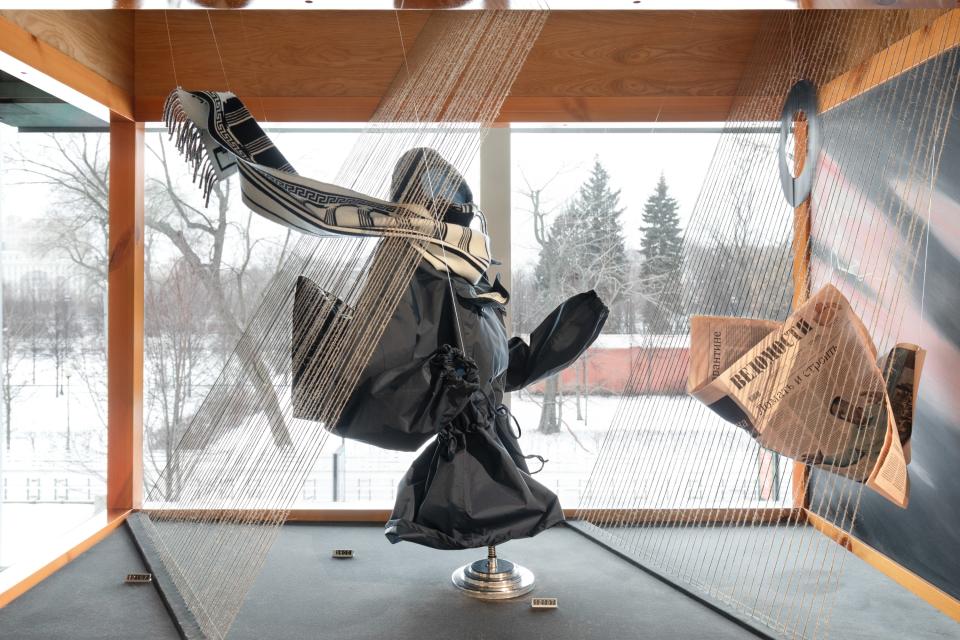
Moscow’s Garage Museum of Contemporary Art was among the first institutions to flirt with the digital realm’s particular offerings, like access to a global audience and exhibiting art in virtual reality. According to the museum's senior curator, Katya Inozemtseva, it was a natural reaction to working with artists whose work tends to be "digital first." After switching to what the museum calls “self-isolation mode,” Garage launched an eponymous online platform in Russian on March 14, offering playlists, games, critical texts, live broadcasts, and online versions of its exhibitions with a sleek web design. The platform’s recently launched English version includes an online edition of the museum’s current exhibition, Passer-by, that connects British fashion label Atelier E.B with artists such as Tauba Auerbach or Elizabeth Radcliffe, using visuals from the show, detailed text on crucial works, and audio recordings with collaborating artists. “The space that both we and Garage visitors inhabit has shrunk to that of a room or an apartment,” says Inozemtseva. “Yet the borders of the museum are expanding.”
Originally Appeared on Architectural Digest

